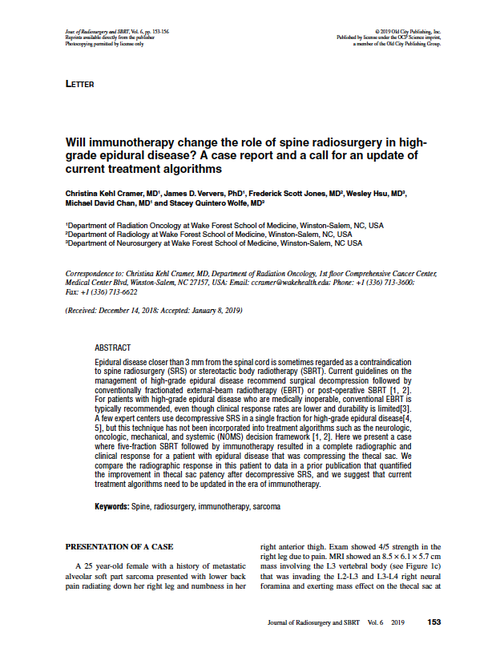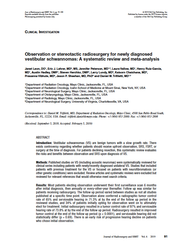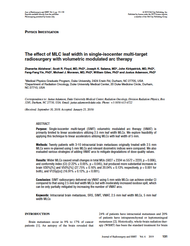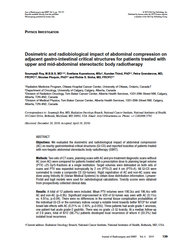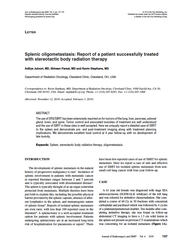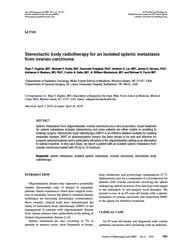- Home
- Journal Contents Downloads
- JRSBRT Downloads
- JRSBRT 6.2, p. 153-156
Product Description
Will immunotherapy change the role of spine radiosurgery in highgrade epidural disease? A case report and a call for an update of current treatment algorithms
Christina Kehl Cramer, James D. Ververs, Frederick Scott Jones, Wesley Hsu, Michael David Chan and Stacey Quintero Wolfe
Epidural disease closer than 3 mm from the spinal cord is sometimes regarded as a contraindication to spine radiosurgery (SRS) or stereotactic body radiotherapy (SBRT). Current guidelines on the management of high-grade epidural disease recommend surgical decompression followed by conventionally fractionated external-beam radiotherapy (EBRT) or post-operative SBRT [1, 2]. For patients with high-grade epidural disease who are medically inoperable, conventional EBRT is typically recommended, even though clinical response rates are lower and durability is limited[3]. A few expert centers use decompressive SRS in a single fraction for high-grade epidural disease[4, 5], but this technique has not been incorporated into treatment algorithms such as the neurologic, oncologic, mechanical, and systemic (NOMS) decision framework [1, 2]. Here we present a case where five-fraction SBRT followed by immunotherapy resulted in a complete radiographic and clinical response for a patient with epidural disease that was compressing the thecal sac. We compare the radiographic response in this patient to data in a prior publication that quantified the improvement in thecal sac patency after decompressive SRS, and we suggest that current treatment algorithms need to be updated in the era of immunotherapy.
Keywords: Spine, radiosurgery, immunotherapy, sarcoma
After payment has been processed for your order of a digital copy (PDF) of this article, you will see a download link on your completed order page and also receive an email containing a download link. The links, which will enable you to download one copy of the article, will expire after 24 hours.
 Loading... Please wait...
Loading... Please wait...

